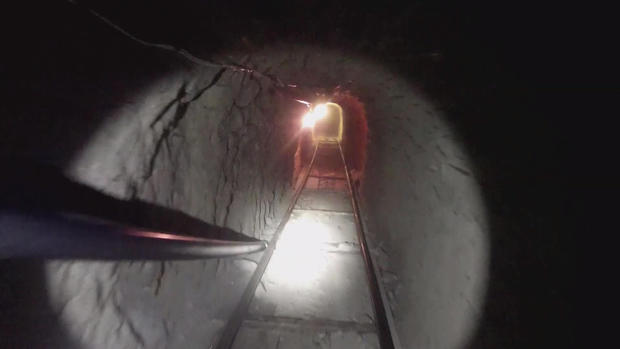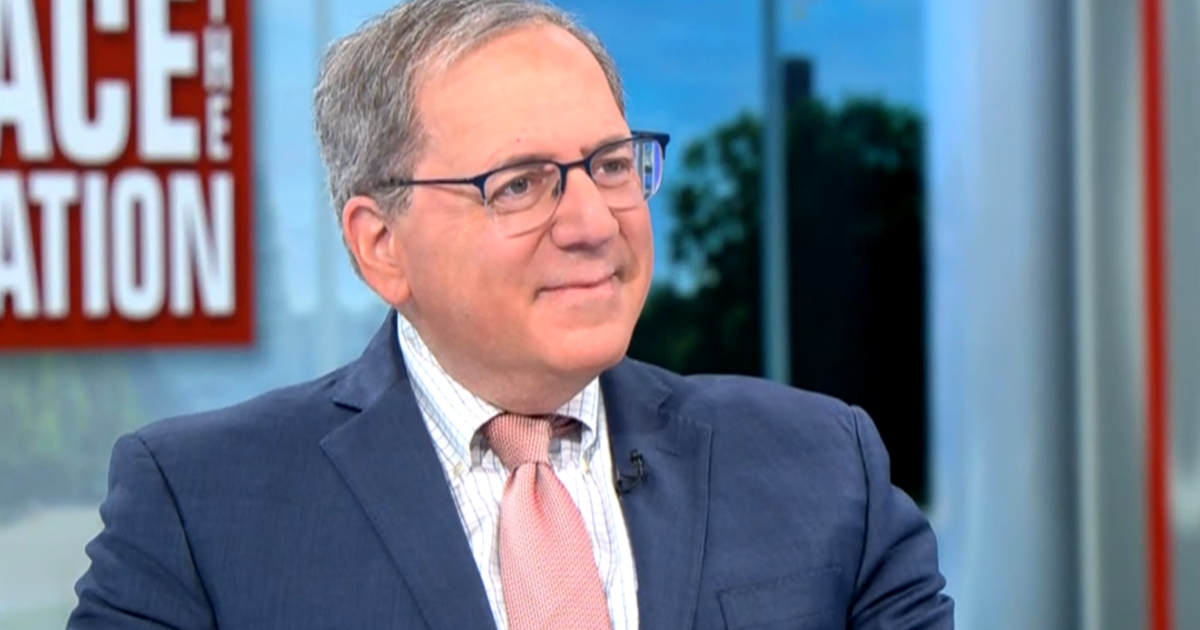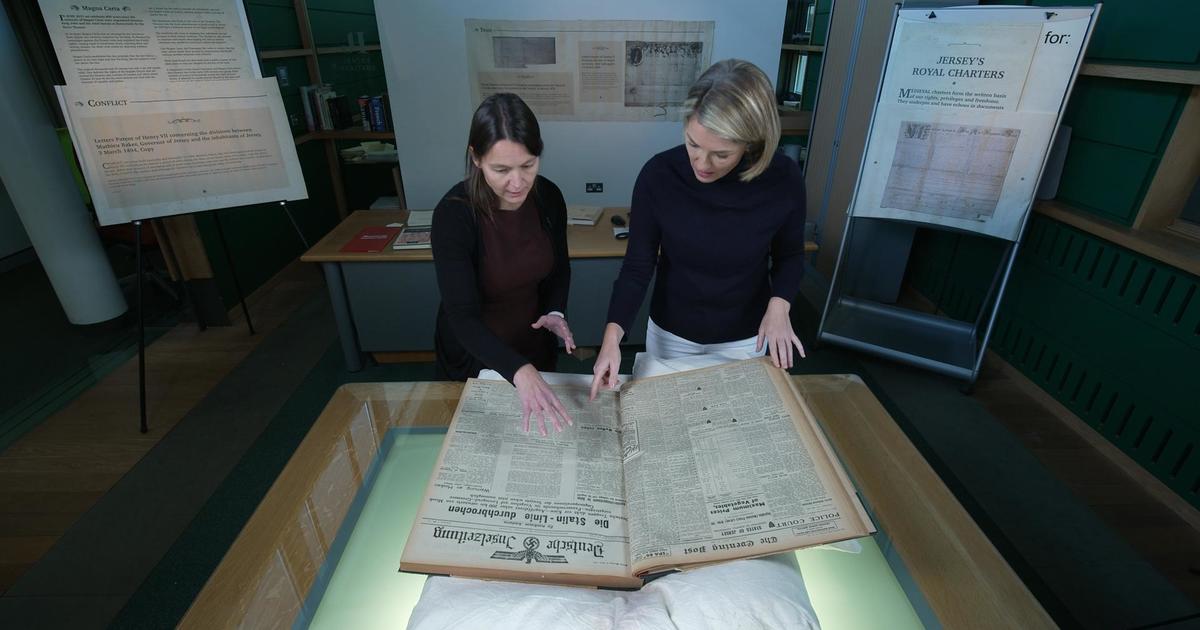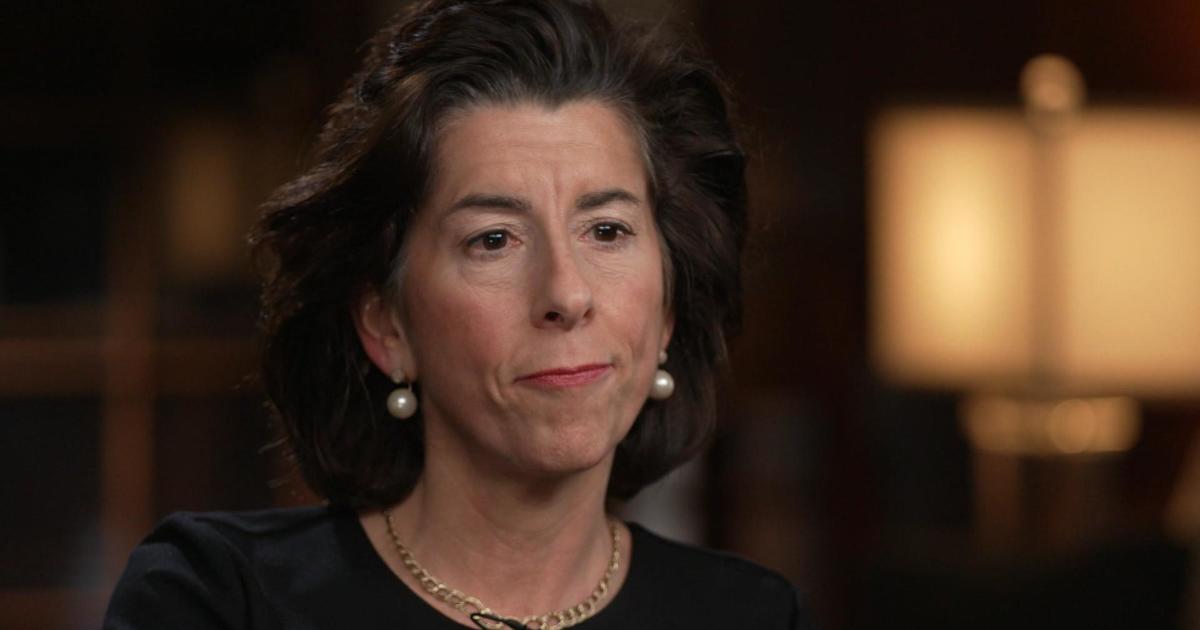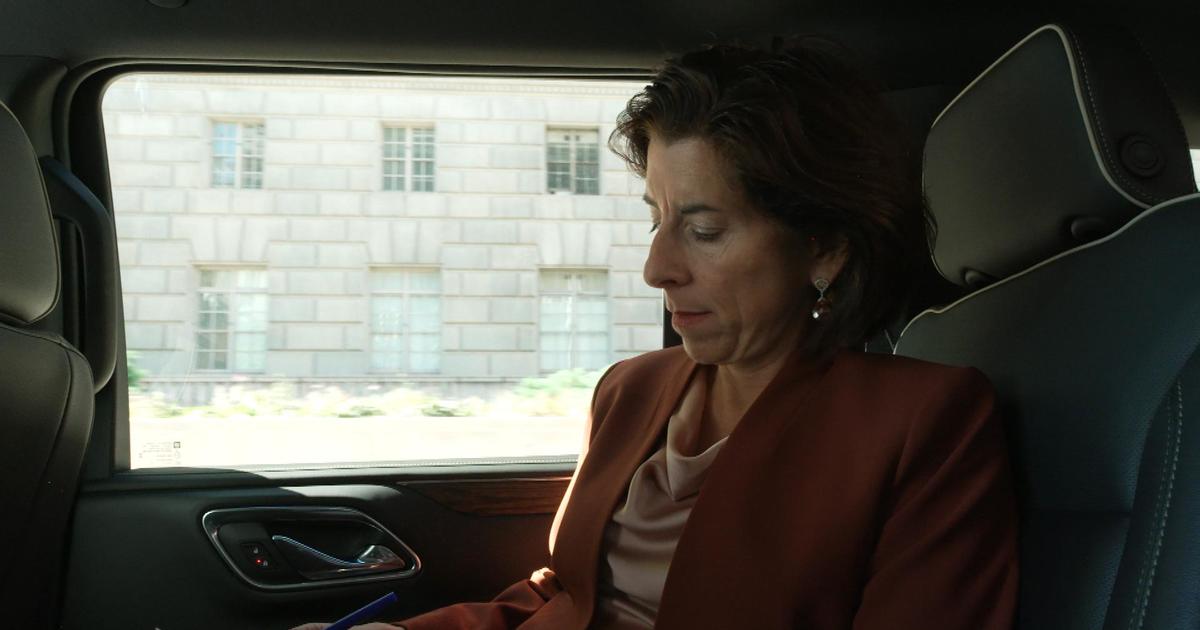Behind the arrest of Public Enemy Number One
The following is a script of "Public Enemy" which aired on Oct. 12, 2014. Bill Whitaker is the correspondent. Howard L. Rosenberg and Ana Real, producers.
In the blood-soaked world of international drug cartels, for the top cops of U.S. law enforcement, Joaquin Guzman was public enemy number one, a title not bestowed on anyone since the gangster era of Al Capone and John Dillinger. He earned that status by putting more narcotics on American streets than anyone in history.
Guzman, known by the nickname "El Chapo," Spanish for "shorty," gained an outsized reputation. He bribed his way out of a Mexican prison in 2001, and for the next 13 years, he used money, violence and gee-whiz escapes worthy of a James Bond villain to avoid capture. A myth grew that he was untouchable.
But tonight we will show you how in February Chapo was finally caught.
After the death of Osama bin Laden, El Chapo became the most wanted man in the world.
Bill Whitaker: So getting him was a big deal for you?
Derek Maltz: Absolutely. In my world, it was like winning the Super Bowl, winning the World Series. This was the actual trophy.
Bill Whitaker: He was number one?
Derek Maltz: Absolutely.
[Derek Maltz: This fight against drugs...]
Derek Maltz was in charge of the DEA's Special Operations Division tasked with finding Chapo.
"The U.S. government and the Mexican government basically said, 'Enough is enough.'" Derek Maltz
Bill Whitaker: What put him at the top of the list?
Derek Maltz: Making billions of dollars, having a reach around the world in Asia, in Australia, in Africa, in Europe. Putting poison on the streets, not just in the United States, but all over the world.
Jim Dinkins was the head of Homeland Security Investigations. He pursued El Chapo for more than a decade.
Jim Dinkins: He's a monster that happened to rise up in a criminal organization that was making billions of dollars.
Bill Whitaker: A monster?
Jim Dinkins: A monster.
Until both men retired in recent months, Dinkins and Maltz helped coordinate the U.S. hunt for Chapo. His real name: Joaquin Guzman.
Incredibly, Guzman was on the Forbes magazine list of billionaires. He was also known to be one of the most violent drug traffickers in the world. As his Sinaloa cartel fought to dominate the drug trade, the war between the cartels turned the southern side of the U.S.-Mexico border into one of the most dangerous places on earth.
Derek Maltz: Thousands of people, electrocuted. Beheaded. Chopping off limbs. Throwing people in acid. He committed some ruthless crimes in Mexico.
He's in custody now and doesn't look quite so ferocious -- cowed, his head bowed. But until he was apprehended by Mexican Marines, Joaquin Guzman, the illiterate son of a farmer, ran a multinational criminal empire.
Jim Dinkins: They had not only transportation. They had manufacturing. They had domestic and local distribution channels.
Derek Maltz: Very sophisticated, with narco-subs. With shipping vessels, with 747s, with private vessels, with tractor trailers, rail cars. The drug cartel was run like a, you know, a Fortune 500 company.
Jim Dinkins: He employed some very sophisticated counterintelligence operations to make sure that if law enforcement was to get in close, they would never actually get to him.
Chapo devised ingenious smuggling methods.
[Man: Marijuana.]
He packed drugs into fake cucumbers and bananas and mixed them with shipments of real produce. But the thing he worked hardest on was making sure he could always get away. Chapo was the first Mexican drug trafficker to hire architects and engineers to build elaborate tunnels, complete with railways, to ferry drugs under the U.S.-Mexico border and he spent millions adapting them to use as escape routes from his many hideouts.
Bill Whitaker: This is very tight, very hot, very close.
We went down into a labyrinth of interlocking tunnels with the Mexican Marines who chased him.
Bill Whitaker: Unbelievable.
This was one of the ways Chapo was able to elude capture time and time again. The Americans thought he was being tipped off by corrupt Mexican officials. But the Mexicans bristled at the accusation they could not be trusted.
Bill Whitaker: So there were suspicions on both sides of the border.
Derek Maltz: Absolutely, yes.
Bill Whitaker: So what was different this time?
Derek Maltz: The U.S. government and the Mexican government basically said, "Enough is enough." And we actually, you know, rolled up our sleeves, got in a room, argued a little bit, put all the intelligence on the table. Shared it with the Mexicans. And ultimately grabbed Chapo.
It started with a routine smuggling probe by Homeland Security investigators at the border crossing in Nogales, Arizona. A wiretap unexpectedly led to a phone linked to one of Chapo's men. U.S. agents followed that thread for more than two years.
Jim Dinkins: Worked it from phone to phone. Device to device, person to person, until they actually had wired out the communication structure. And the communication structure was the key. It was a very clear picture to us on what was happening and how he was running this business.
Several U.S. law enforcement agencies, the DEA, the marshals, Homeland Security, the FBI, were all pursuing Guzman separately. But this time they decided to streamline their efforts, and funnel everything through the DEA.
Derek Maltz: And we had one voice in how we were going to pursue, sharing intelligence with the Mexican officials.
Bill Whitaker: Was that significant, that important, to have that one voice?
Derek Maltz: Absolutely. You can't do a job against Chapo Guzman unless you're working together.
And Tomas Zeron was that voice on the Mexican side.
[Man: "Attencion!"]
Zeron is chief of the investigative agency of the Prosecutor General of the Republic, Mexico's version of the FBI.
Bill Whitaker: The main U.S. assistance was surveillance? Wire tapping, phone surveillance and that sort of thing?
Tomas Zeron: I will just tell you they help us with technology, because they're really good in technology and that will encapsulate everything.
Zeron, in turn, tapped the Mexican Marines to execute the plan. They are elite special forces, highly-trained and known for using deadly force.
We watched one of their training sessions - an assault on a mock up of a cartel hide-out. And we traveled with the Marines to Sinaloa, a remote state on the pacific coast and to its capital, Culiacan - Chapo's base of operations where his cartel still rules.
It was here in Culiacan, on February 12, after weeks of secret surveillance, the Marines started to move on the cartel, rounding up Chapo's henchmen, who started to talk.
Derek Maltz: There was a lot of close associates of Chapo that were arrested over these periods of time. And there was information developed that was provided to the Mexicans. So, it wasn't just technical information. Bank information, surveillance information, documents, telephone information.
Based on intelligence collected on both sides of the border, Marines raided a series of cartel safe houses on February 17. They seized more than three tons of crystal meth and cocaine, automatic weapons and ammunition, a rocket launcher and a diamond-encrusted pistol with the initials of Joaquin Guzman. They also arrested one of Chapo's top lieutenants, a man called "The Nose." And he flipped quickly. He told them where Chapo was hiding and how he planned to escape.
Several weeks later, the Marines took us to the place where they were told Chapo was hiding. This nondescript house in the midst of a middle class neighborhood was a fortress. They had to ram their way through a reinforced steel door.
Bill Whitaker: It took you eight minutes to open the door?
Lobo: Si. Ocho minutos.
When they got inside, El Chapo was nowhere to be found. But they did find this.
Bill Whitaker: The tub. Look at this. The escape hatch.
The bathtub was equipped with a hydraulic lift. It's been turned off.
Bill Whitaker: Very steep. He couldn't have done this quickly.
But underneath is the entranceway to a hidden tunnel.
Bill Whitaker: While Marines were battering down the front door, they say Guzman, startled, barefoot and in his underwear, clambered down these stairs and escaped through this tunnel with his bodyguard and two women.
This was part of a maze of tunnels connected to the city sewers of Culiacán and, it turns out, to six other safe houses, all equipped with hydraulically-controlled bathtub escape hatches. Our guide told us that even though they had a ten-minute head start, he could hear the fugitives splashing through the water.
But they were too far ahead to catch. When the Marines emerged from this spillway by the river, El Chapo had vanished.
"He's a man on the run. You need money. You need food. You need weapons."
Bill Whitaker: So what did you think when he got away, once again, in Culiacan?
Derek Maltz: I never believed that he would ever be captured.
Bill Whitaker: Really?
Derek Maltz: I thought he was gone again. I thought he may have been tipped off.
Jim Dinkins: But the Mexican Marines just were relentless. And they went from house through the tunnels, from tunnels to house from house. And just kept on going.
Chapo and his wife, a one time beauty queen, their twin toddlers, a nanny, a cook and his most trusted bodyguard were desperately trying to shake the Marines off their trail. They ditched their phones and got new numbers.
Jim Dinkins: He's a man on the run. You need money. You need food. You need weapons. And he was also very interested in knowing who had been arrested, I'm sure, and what was going on. So it was very hard for him to go into isolation, complete isolation.
Bill Whitaker: How is he communicating at this point?
Jim Dinkins: I'm sure multiple different ways but the ways that, you know, that were the most vulnerable is back on cell phones. So...
Bill Whitaker: So he's back using the cell phones?
Jim Dinkins: Back using cell phones and you can't. Now you're on the run, so how they going to know to call? You have to tell them, "All right, well, I got a new phone number. Here it is." Well, you just told us too.
Five days later, the Americans traced the phone of Chapo's bodyguard to the resort city of Mazatlan, 136 miles away. And to this beachfront building. They shared that intelligence with the Mexicans.
At exactly 6:40 a.m. on February 22, the Marines crashed through the door of number 401.
When he saw the red beads of their laser sights speckled on his chest, the bodyguard threw down his rifle and threw up his hands. Next, the Marines burst through the door of the master bedroom where Chapo's wife stood naked by the bed. A Marine pushed past her and kicked in the bathroom door. There was somebody behind it. It was El Chapo.
Back in Mexico City, Tomas Zeron and his team were listening in real time as the high-stakes drama of Chapo's capture unfolded.
Bill Whitaker: Was there cheering? Was there high-fiving?
Tomas Zeron: Of course. It was a jubilee. We felt at that point that we were all one. That we were all doing something to have a good Mexico.
Jim Dinkins: We did not ever anticipate that he'd be captured alive. We thought he'd fight to the death.
Bill Whitaker: Are you surprised that he didn't?
Jim Dinkins: I was surprised.
Derek Maltz: I was shocked.
Bill Whitaker: Shocked?
Derek Maltz: Absolutely shocked.
Bill Whitaker: What shocked you more? That he was captured? Or that he was captured without a shot?
Derek Maltz: Both. Captured without a shot was pretty amazing.
The once-mighty drug lord, who terrorized Mexico and out-foxed his pursuers for 13 years, was defeated. Processed like any common criminal, Guzman was fingerprinted. Mug shots taken. Then, he was paraded before the press like a trophy and loaded onto a helicopter.
Looking dazed, scared and docile, El Chapo was flown to Altiplano prison, Mexico's super-max. Law enforcement officials vow he will never escape again.
Bill Whitaker: The Sinaloa cartel is still in business. It's still deeply involved in drug trafficking. So Guzman is now gone but has anything really changed?
Tomas Zeron: The cartel continues, but even though it continues, we have made detentions after we detained Guzman. We are not going to leave Sinaloa and are going to stay there until we dismantled the cartel completely.
Jim Dinkins: We know that when you take out bin Laden, that the threat of terrorism did not end. Nor will the threat of drugs end by taking out El Chapo. But it was still worth every bit of effort to take that man off because it sends a signal that you are touchable.

